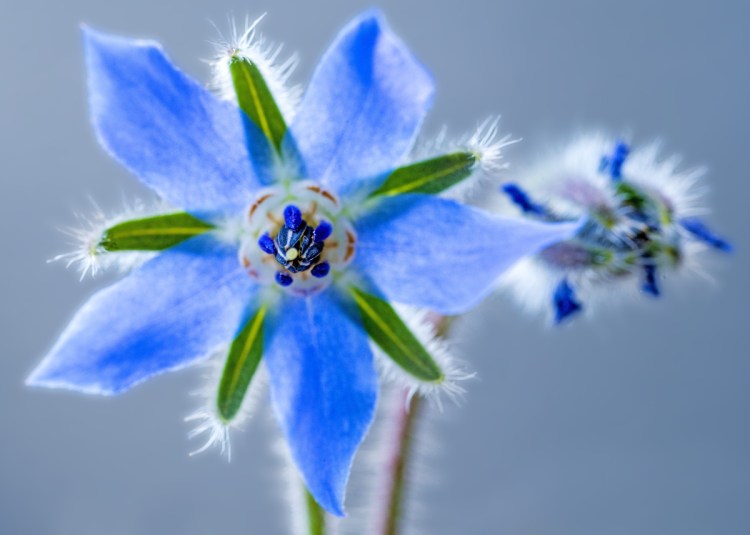I can already see that this gardening season has some problems in store for me. Mostly, the problem will be lack of space. We need garden space for both old and new strawberry plantings, which means we’ll have less room for flowers and vegetables.
Given that space is at a premium, I am torn between sticking with old favorites that I know will produce well but will not provide any surprises or growing new varieties to keep me entertained, knowing that if they fail we can always buy local fruits and vegetables from the two farm stands that are less than a half a mile in different directions from our house.
I’m leaning toward entertainment. That approach may keep me from getting obsessed with politics as the midterm election approaches. And it’ll mean growing a lot of flowers. My wife Nancy and I want beauty around us, bright colors to cheer us up.

Danish flag poppy
One flower I hope does well is French Alouette imperial larkspur, which we got from Renee’s Garden Seeds, a California company that always has an interesting selection. We are going to have to hurry to get these seeds in the ground. Larkspur should be sown from February to April, and April has but a single week left. Frozen ground and snow cover would have made planting difficult in February or March, and we were in France (Loire Valley, Bordeaux and Paris: Yes, we have a tough life) until April 10, so I am behind in everything. Both spring cleanup and seed planting were delayed – although following Maine’s weather from a distance, I’m not sure I would have accomplished much had I been here.
Anyway, this larkspur – which we have never grown before, so we can’t guarantee it will work – produces 3- to 4-foot-tall spires densely packed with double flowers in pink, purple, rose, lilac blue and white. They make striking cut flowers and can also be air-dried for year-round use. These are going to get a prime spot in the garden.
We also plan to grow blue borage, another experiment from Renee’s with both ornamental and culinary value. Blue borage can be direct-seeded and grows 2 to 3 feet tall. It has small true-blue flowers and silvery leaves, which should make it stand out. The blossoms are said to have a mild cucumber flavor, and they can be added to fruit and vegetable salads, used to decorate birthday cakes or frozen into ice cubes for decorative iced teas.
After half a century together, Nancy knows what I like. I didn’t even know she’d ordered Black Peony poppies until I was going through our supplies in preparation for writing this column. I love black flowers. OK, they aren’t really black, but the darkest of purple so they look black. Lettuce-leaf poppies are a fixture in our vegetable garden. They are annuals but self-seed, and we have them in shades of pink, white and red – double and single blossoms. Now we’ll add the black poppies, which grow more than two feet tall and have fully ruffled double flowers.
We’ll also grow Danish flag poppies, an unusual heirloom dating back to at least 1888. It’s a single blossom with white splotches near the base of the petals and red outside, markings which resemble the Danish flag.
Nancy and I simply enjoy poppies. If you try to pick an open blossom for a vase, it will fall apart before you get into the house, but they are glorious to look at in the garden. The Fedco catalog offers instructions for using poppies in flower arrangements, though. I’ve never tried it, but I trust Fedco, and it sounds like fun – if a bit dangerous. You find buds on stems that have straightened up but not completely opened, cut them with as long a stem as possible, sear the stem with an open flame and immediately put the stem in water. “Poppies open after several hours – an austere bouquet in the evening can become a riot of colors the next morning,” the catalog says.
As these annual poppies grow, their stems are curved toward the ground and the flower buds are small – but as the buds fatten and get ready to burst into bloom, the stems straighten.
Flowers won’t be the only source of color in our garden. The vegetables will brighten up our lives, as well, even if we’ll have to allot them less space than usual.
We’ll grow two different carrot mixes (which include those colored carrots – blue, white and orange – now appearing in markets): Circus Circus from Renee and Over the Rainbow Mix from Fedco. And we’ll grow the vibrant orange Mokum hybrid.
For colorful dining, we’ll plant two types of beet mixes with purple, red, gold and candy-cane stripe beets.
As always, we will have red lettuce, Bright Lights Swiss chard and brightly colored tomatoes and peppers. The rhubarb stems will be strong red. The lilacs, daylilies, peonies, azaleas and rhododendrons will be popping with bright colors, too.
Right now I am sick of the white of winter’s snow, so I’m thinking I’ll barely notice the white blossoms in our garden like shadbush, star magnolia and Annabelle hydrangea. But when they blossom, I’ll probably change my mind.
TOM ATWELL is a freelance writer gardening in Cape Elizabeth. He can be contacted at: tomatwell@me.com.
Send questions/comments to the editors.


